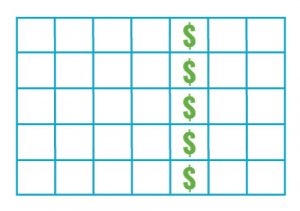Creating a successful Pay for Performance program is both art and science. We have designed and implemented PFP programs for over 20 years and have learned the hard way what works and what doesn’t work. Here are the fundamental building blocks for any successful program, as well as a few pitfalls to watch out for.
Pay for Performance should reduce your labor costs, not increase them.
Pay for performance is just as its name states – employees get more pay for better performance. When building out the incentive algorithm, it needs to be based on objective measurements which, when improved upon, lower the overall labor cost for the organization. For example, assuming it currently costs you $1 per unit to process, if the employee is able to reduce the cost per unit to 80 cents per unit, then paying them 5 cents a unit as a bonus creates a total cost of 85 cents a unit. The company reduces their cost per unit by 15%, and the employee increases their pay. In order to do this you really need to have a firm understanding of your cost to serve. Too often we see companies design a pay for performance program that actually increases their unit labor cost. Those programs are almost always shut down quickly because they are achieving the opposite financial results for the company.
The employee incentive must be aligned with the goals of the company and management.
The founder of the X-Prize competition, Peter Diamandis, likes to say “You get what you incentivize,” so beware of unintended consequences. If you focus solely on increased productivity with your pay for performance program, then you may see quality and safety suffer. You need to look at the incentive holistically and work through potential negative consequences of the incentive structure. Productivity is important; but so are other workplace elements, such as quality, teamwork, safety, etc. Incorporating multiple factors is critical.
PFP requires fair and consistent performance standards.
The key building block for any successful pay for performance program is fair and consistent labor standards. If you incentivize employees on units per hour, but, depending on the product mix, the UPH can vary between 50 to 300 UPH, the employee’s bonus is then more dependent upon the work they get and not their effort. Measurements must be fair and objective so that no matter what work mix the employee receives, they can achieve the same bonus amount for the same quality and effort. Without fair standards, the PFP program will fail and create potential favoritism within the organization, with work assignments achieving the opposite objective of aligned incentives.
The incentive should be for work the employees have control over.
It is a common perception that if you reward all employees based on the profitability of the company, then incentives are fully aligned. From our experience, this does not work for all workers. Production employees really have no control over the sales of the company, margins, cost of materials, etc. The goal for the production worker is to be as efficient as possible with the highest level of quality they can produce. The incentive for them should be focused on this, not exogenous factors they have no control over. We have seen many times companies cancel productivity bonuses if the company as a whole misses its profitability numbers, thus, in a sense, punishing the production employees for something they have no control over.
Our approach is to incentivize everyone in the company with what they control. As a comparable example, do organizations cancel sales commissions for the top sales person if the rest of the company misses their goal? No they don’t, because if they did, the sales person would likely go to a competitor. The same approach should be taken for each position that you can measure. You want to incentivize each person to be the best at their job. If the program is set up correctly with accurate costing metrics, then for every $1 in bonus you are paying out, the company is actually saving $2-3 net.
The payout time period should be aligned with the employee’s role in the business.

Different employees have different financial needs and time horizons. Production workers tend to be younger and more short-term oriented, whereas management tends to be older and more long-term focused. We always recommend for production environments to offer bonuses to employees on each paycheck. This provides quick positive feedback to each employee and drives continual motivations. We have seen far fewer increases in productivity when bonuses are paid out at the end of the year. For management this works because their bonus is based on more complex factors and overall unit profitability.
Pay for performance is an incredibly powerful tool to turbo charge productivity and reduce costs. However, any program must be well thought out and vetted to make sure the above factors are taken into consideration.





